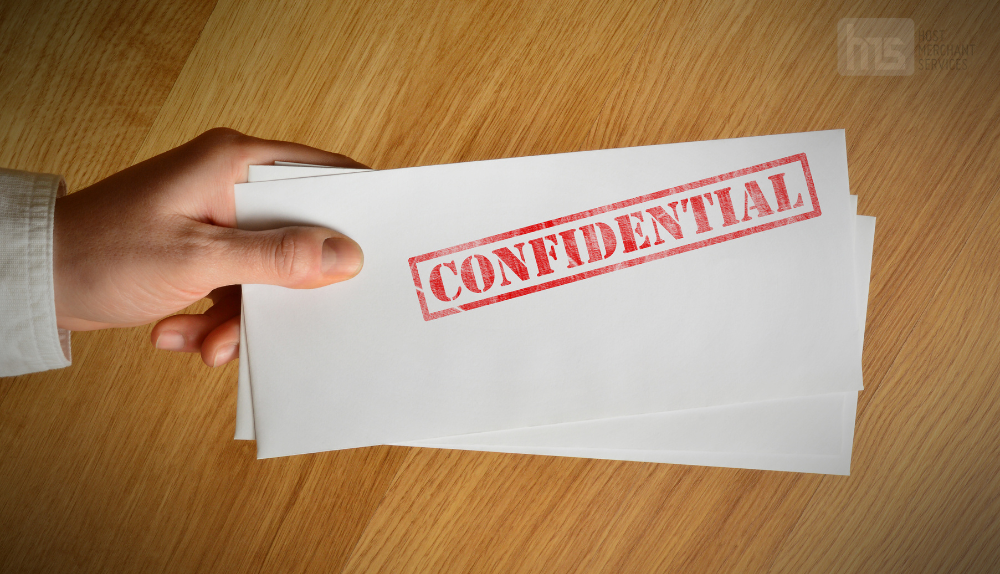What You Should Know About M&A Confidentiality Agreements

Documents You Need to Sell Your Business
June 29, 2023
What Are M&A Earnouts?
July 3, 2023In the high-stakes world of mergers and acquisitions (M&A), where fortunes are made, and business landscapes are transformed, one crucial element stands tall as the guardian of secrecy and strategic advantage: the confidentiality agreement. Often overlooked amidst the excitement and intrigue surrounding these deals, confidentiality agreements serve as the silent sentinels, preserving the sanctity of sensitive information and ensuring that critical details remain locked away from prying eyes. Understanding the intricacies of M&A confidentiality agreements is paramount for both parties involved as they navigate the treacherous waters of negotiations, due diligence, and the ultimate pursuit of success.
Join us on a journey through the clandestine corridors of M&A as we unveil the essential insights and key considerations that every astute investor, entrepreneur, or corporate executive should know about these elusive protectors of M&A secrets. Welcome to the realm of M&A confidentiality agreements.
What are M&A Confidentiality Agreements?
M&A Confidentiality Agreements, also known as non-disclosure agreements (NDAs), are legally binding contracts that establish a framework for protecting sensitive information during mergers and acquisitions. These agreements are designed to maintain confidentiality and prevent the unauthorized disclosure of critical details related to the deal.
M&A transactions involve sharing a wealth of proprietary and confidential information, including financial data, strategic plans, customer lists, intellectual property, and trade secrets. Given the competitive nature of the business world, it is crucial to ensure that such information remains secure and is not exploited by competitors or disclosed to the public prematurely.
Confidentiality agreements outline the obligations and responsibilities of all parties involved, including the buyer, seller, and any other individuals or entities granted access to confidential information. They typically specify the duration of confidentiality, the permitted use of the information, and the consequences for breaching the agreement. By establishing a framework of trust and confidentiality, M&A confidentiality agreements facilitate open communication and foster an environment conducive to successful deal-making.
Why is Confidentiality Important in M&A Agreements?

Firstly, M&A transactions involve the exchange of sensitive and proprietary information. Both the buyer and the seller share confidential data such as financial records, business strategies, customer lists, and trade secrets. Protecting this information is crucial to prevent competitors from gaining an unfair advantage or potentially damaging the reputation of the involved parties. Maintaining confidentiality ensures that sensitive data remains secure and that the parties can freely share information without fear of unauthorized disclosure.
Secondly, confidentiality promotes a level playing field during negotiations. By safeguarding the secrecy of the deal, all parties involved can engage in open and frank discussions without the fear of sensitive information being leaked to external parties. This allows for a more honest and transparent negotiation process, facilitating better decision-making and enabling the parties to explore potential synergies and opportunities without external interference.
Furthermore, confidentiality inspires trust between the buyer and seller. M&A transactions involve a high level of risk, and both parties must feel confident that their shared information will not be misused or disclosed to unauthorized individuals. By signing a confidentiality agreement, the parties demonstrate their commitment to protecting each other’s interests and fostering a collaborative environment.
Lastly, confidentiality is essential for maintaining market stability. Premature disclosure of M&A negotiations can have significant implications, including influencing stock prices, affecting employee morale, and potentially disrupting ongoing business operations. By keeping the details confidential until the appropriate time, the parties can manage the impact on stakeholders, minimize disruptions, and ensure a smooth transition.
In summary, confidentiality is crucial in M&A agreements to safeguard sensitive information, promote fair negotiations, build trust, and maintain market stability. It is a fundamental element that underpins the success and integrity of the entire M&A process.
How to Format M&A Confidentiality Agreements

Formatting an M&A (mergers and acquisitions) confidentiality agreement is important to create a clear and organized document that effectively protects sensitive information. Here are some guidelines for formatting an M&A confidentiality agreement:
Title
Begin with a clear and descriptive title that reflects the nature of the agreement, such as “Confidentiality Agreement” or “Non-Disclosure Agreement.”
Parties
Identify the parties involved in the agreement at the beginning, typically as the “Disclosing Party” and the “Receiving Party.” Clearly state their full legal names, addresses, and any relevant company information.
Effective Date
Include a section indicating the effective date of the agreement.
Definitions
Provide a section that defines key terms used throughout the agreement. This helps ensure clarity and consistency in understanding the terms and obligations. Key terms may include “Confidential Information,” “Disclosing Party,” “Receiving Party,” and “Permitted Recipients,” among others.
Confidential Information
Specify a section that outlines what constitutes confidential information under the agreement. Clearly define the types of information that are considered confidential, such as financial data, business plans, customer lists, trade secrets, or proprietary technology.
Obligations of the Receiving Party
Detail the obligations and responsibilities of the Receiving Party regarding the handling and protection of confidential information. This may include provisions such as non-disclosure, non-use, and restrictions on copying, reproducing, or sharing the information.
Permitted Disclosures and Exceptions
Outline any exceptions or circumstances where the Receiving Party is allowed to disclose confidential information. Common exceptions may include disclosures required by law, court orders, or disclosures with prior written consent from the Disclosing Party.
Term and Termination
Specify the duration of the confidentiality agreement, including the start date and end date. Additionally, include provisions for termination, such as events that may trigger the termination or the ability of either party to terminate the agreement with prior notice.
Remedies and Injunctive Relief
Include a section addressing the remedies available in case of a breach of the confidentiality agreement, such as damages, injunctive relief, or specific performance.
Governing Law and Jurisdiction
Specify the governing law and jurisdiction that will govern the agreement and any disputes that may arise.
Execution
Include signature blocks for all parties involved, allowing them to sign and date the agreement. Consider including space for printed names and titles.
Remember to consult with legal professionals experienced in confidentiality agreements or M&A transactions to ensure that the agreement is compliant with relevant laws and tailored to the specific needs of the parties involved.
How to Define Confidential Information or Evaluation Material?

Defining confidential information or evaluation material in M&A agreements is a critical step to clearly establish what types of information are considered protected and subject to confidentiality obligations. Here are some guidelines on how to define confidential information:
Broadly describe the scope
Begin by providing a general description of the confidential information or evaluation material that will be subject to the agreement. This can include any information that is non-public, proprietary, or of a sensitive nature.
Specify categories of information
Identify specific categories of information that will be considered confidential. This can include financial data, business plans, customer lists, intellectual property, trade secrets, technology, marketing strategies, or any other proprietary information relevant to the transaction.
Include non-exhaustive examples
Offer illustrative examples of the types of information that fall within the defined categories. This helps provide clarity and guidance to the parties involved.
Address tangible and intangible formats
Clarify that confidential information can exist in various forms, including documents, data, records, reports, software, prototypes, drawings, or any other physical or electronic formats.
Consider exclusions
Determine any exclusions or limitations to the definition of confidential information. For instance, information that is already publicly available or becomes public through no fault of either party may be exempt from confidentiality obligations.
Define evaluation material
If the agreement includes the exchange of evaluation material, clearly define what constitutes such material. This can include any documents, data, or analyses provided for the purpose of evaluating the transaction or making informed decisions.
Address marking requirements
Specify whether confidential information needs to be marked as “confidential” or “proprietary” to receive protection or if the obligation applies regardless of whether the information is labeled.
Refer to specific legal provisions
Depending on the jurisdiction and governing law, it may be beneficial to reference any relevant legal provisions or regulations related to the protection of confidential information.
It is essential to consult with legal professionals experienced in M&A transactions to ensure that the definition of confidential information in the agreement aligns with the specific needs and requirements of the parties involved.
What are the Exceptions to Restrictions on Disclosure?
While confidentiality agreements in M&A transactions generally impose restrictions on the disclosure of confidential information, there are some common exceptions to these restrictions. It’s important to note that the specific exceptions may vary depending on the terms of the agreement and the applicable laws. Here are a few common exceptions:
Authorized disclosures
The agreement may specify certain individuals or entities that are authorized to receive confidential information. Disclosure to these authorized parties, such as advisors, attorneys, or financial institutions, is typically permitted as long as they are bound by similar confidentiality obligations.
Required by law or regulation
If there is a legal or regulatory obligation to disclose confidential information, the disclosing party may be exempt from the confidentiality obligations. This can include compliance with court orders, government inquiries, or securities regulations that mandate the disclosure of certain information.
Prior knowledge or independently obtained information
If the receiving party can demonstrate that they had prior knowledge or independently obtained the same information outside of the confidential disclosure, they may not be subject to the confidentiality obligations for that particular information.
Consent of the disclosing party
If the disclosing party gives explicit consent for the receiving party to disclose the confidential information, it may override the confidentiality obligations. This consent is usually obtained in writing to ensure clarity and avoid misunderstandings.
Permitted disclosures for legal or business purposes
Confidential information may be disclosed to the extent necessary for legal proceedings, enforcing or defending legal rights, or fulfilling the purpose of the M&A transaction itself. This can include disclosure to accountants, auditors, or potential investors.
It is essential to carefully review the confidentiality agreement and consult with legal professionals to understand the specific exceptions and limitations on disclosure that are applicable to a particular M&A transaction.
Final Words
In the realm of mergers and acquisitions, confidentiality agreements stand as a formidable shield safeguarding sensitive information and securing the success of complex deals. These agreements, rooted in trust and the preservation of proprietary knowledge, provide a framework for protecting valuable assets, fostering open communication, and promoting fair negotiations. By upholding confidentiality, parties can navigate the intricate paths of due diligence and strategic decision-making, confident that their secrets are shielded from prying eyes.
M&A confidentiality agreements play a pivotal role in preserving market stability, ensuring a level playing field, and cultivating an environment where the pursuit of transformative business opportunities can thrive. As the world of mergers and acquisitions continues to evolve, understanding and prioritizing the importance of confidentiality agreements remains paramount, paving the way for prosperous collaborations and the shaping of industries on a global scale.
Frequently Asked Questions (FAQs)
Why do I need a confidentiality agreement for M&A transactions?
A confidentiality agreement is essential in M&A transactions to protect sensitive information from unauthorized disclosure, maintain a competitive edge, facilitate open communication, and establish trust between the parties involved.
What information should be included in a confidentiality agreement?
A confidentiality agreement should include details such as the definition of confidential information, the obligations of the receiving party, permitted disclosures, exceptions to confidentiality, duration of the agreement, remedies for breach, and the governing law and jurisdiction.
Can I disclose confidential information to advisors or consultants?
Yes, it is common to disclose confidential information to advisors or consultants who are bound by similar confidentiality obligations. However, it is crucial to include provisions in the agreement that explicitly allow such disclosures and ensure the advisors or consultants are aware of their responsibilities.
What happens if someone breaches a confidentiality agreement?
If someone breaches a confidentiality agreement, they may be subject to legal consequences and liable for damages. The specific remedies and consequences will depend on the terms outlined in the agreement and the applicable laws.
Are there any exceptions to confidentiality obligations?
Yes, confidentiality obligations may have exceptions, such as disclosures required by law or court orders, information already in the public domain, or disclosures with the prior written consent of the disclosing party. These exceptions should be clearly outlined in the confidentiality agreement.




